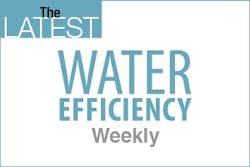Across California and the west, the historic drought has been the talk of the media. Some communities are “drought shaming”—publicly outing conspicuous consumers. We even have apps to tattle on our neighbors, adding an Orwellian twist. Water is a precious resource to all of us, and we need it to maintain our health and comfort, and to irrigate our landscapes and crops. On whether drought shaming works, the debate is open. But it keeps the drought in the media, which has the effect of increasing the publicity of the problem.
Across California and the west, the historic drought has been the talk of the media. Some communities are “drought shaming”—publicly outing conspicuous consumers. We even have apps to tattle on our neighbors, adding an Orwellian twist. Water is a precious resource to all of us, and we need it to maintain our health and comfort, and to irrigate our landscapes and crops. On whether drought shaming works, the debate is open. But it keeps the drought in the media, which has the effect of increasing the publicity of the problem. [text_ad] Earlier this month, Governor Jerry Brown extended the drought state of emergency, mandating water restrictions another year into 2016, even if the expected El Niño delivers the rains we hope. Across the board, communities were mandated to cut potable water use by 25% from 2013 levels. Many communities have been successful in their efforts. In my town, Santa Barbara, we’ve heard reports that we’ve cut up to 37% of our potable water use. Which is great! Or is it? Potable water delivered by local water districts is a fee-based commodity. If water use goes down by 37%, that means water use fees will go down a corresponding amount. In Santa Barbara, that amounts to an estimated $5 million dollar shortfall for the water district budget. Just because we’re using less doesn’t mean the costs associated with delivering water goes down. Sure, perhaps the pumps don’t have to work as much. But the infrastructure still has the same maintenance and repair costs, and the water district is not likely to let go of 37% of their staff. Across the state, the expected shortfall across water districts is estimated to be up to $1 billion dollars. Someone will get stuck with the bill. And who is that? You guessed it: the ratepayer. Communities are now victims of their own success, and have to face rate increases to make up the budget differences. So what do you think? Is it fair to ask water users to save, and then slap them with a rate increase when we meet their goals? I’d at least like to hear that the utilities are tightening their belts too.Earlier this month, Governor Jerry Brown extended the drought state of emergency, mandating water restrictions another year into 2016, even if the expected El Niño delivers the rains we hope. Across the board, communities were mandated to cut potable water use by 25% from 2013 levels. Many communities have been successful in their efforts. In my town, Santa Barbara, we’ve heard reports that we’ve cut up to 37% of our potable water use.
Which is great!
Or is it?
Potable water delivered by local water districts is a fee-based commodity. If water use goes down by 37%, that means water use fees will go down a corresponding amount. In Santa Barbara, that amounts to an estimated $5 million dollar shortfall for the water district budget. Just because we’re using less doesn’t mean the costs associated with delivering water goes down. Sure, perhaps the pumps don’t have to work as much. But the infrastructure still has the same maintenance and repair costs, and the water district is not likely to let go of 37% of their staff.
Across the state, the expected shortfall across water districts is estimated to be up to $1 billion dollars.
Someone will get stuck with the bill. And who is that? You guessed it: the ratepayer.
Communities are now victims of their own success, and have to face rate increases to make up the budget differences. So what do you think? Is it fair to ask water users to save, and then slap them with a rate increase when we meet their goals? I’d at least like to hear that the utilities are tightening their belts too.
